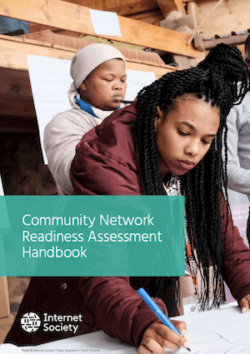Author: Sol Luca de Tena
Nearly three billion people are still living without Internet access, cut off from the opportunities it offers and the ability to connect with resources during challenging times. The Internet is critical to enabling sustainable development and it’s the base for an emerging digital economy, yet there are communities losing out on these gains.
The current model of providing Internet service can’t reach people everywhere, and fewer people are coming online every day. Thankfully, complementary connectivity solutions are changing that, and community networks are one of them.
Community networks are networks deployed and operated by people to meet their own needs. In recent years, the community networks movement has grown, with more and more people pointing to them as a solution to bridge the digital divide in places ranging from South Africa and the Democratic Republic of Congo, to Argentina and the United States, to Thailand and Pakistan.
Community networks still face many challenges in areas such as regulations, funding, sustainability, and community engagement. So the road to building a community network itself has three major challenges:
- Introducing communities to the concept of community networks.
- Assessing whether a community will benefit from and be able to sustain a community network.
- Planning and building the network.
This Readiness Assessment Handbook is designed to address the second and third challenges above: assessing community network readiness and planning and building the network. It is aimed at Africa-based practitioners and organizations who want to expand into community networks. The book also features an appendix with a directory of courses and resources useful at various stages of such assessment and planning—and what comes next.
The readiness assessment is part of a larger process towards developing a community network. It starts from the already existing work (or background) of the team taking on this assessment and ends at a fully operational community network. This process is not necessarily linear. In some cases, certain stages may need to be repeated.
This handbook is made up of two main reading parts:
- Knowledge Areas of Community Networks offers an overview of key elements of community networks.
- Assessment Workbook guides readers to assess a particular community’s readiness.
We also provide two tools to help gather the outcomes of the readiness assessment: the Concept template and the Techno-economic template. The document also includes a directory of additional courses and reading material on community networks.
This Community Networks Readiness Assessment has been developed by community networks practitioners in Africa. Our approach has been informed by the challenges we and our colleagues face and by the strategies people have used to overcome them.
